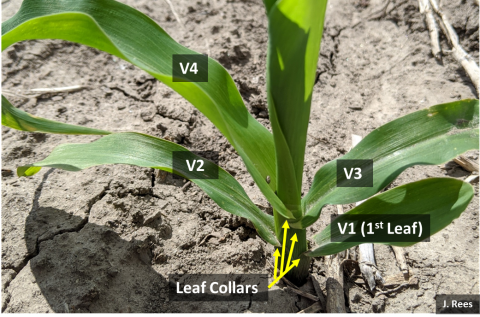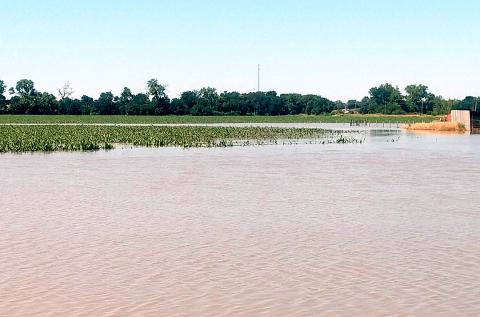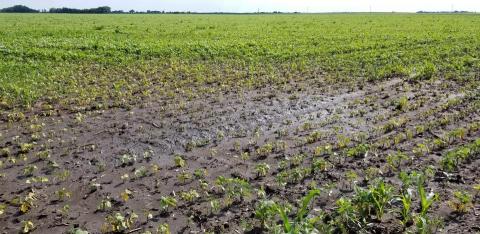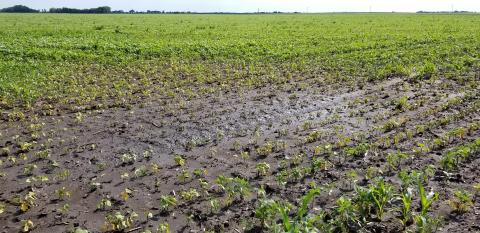Accurately Growth Staging Corn after Lower Leaf Loss and Implication for Post-emergence Herbicide Application
May 29, 2020
After a frost, or hail event, the dead tissue is not able to resurrect itself and is eventually sloughed off as the plant continues to grow. Thus a common question is how do I determine corn growth stage when I can no longer count leaves?
Evaluating Freeze and Chilling Injury in Corn and Soybeans
May 13, 2020
The weather took a turn to the cold side over the last week. Across Nebraska, lows at or below 32°F were recorded. Clear conditions coupled with these temperatures favor frost formation especially in low lying areas. So, what does this mean for our crops?
Crop Impacts and Options After Mid-season Flooding
July 2, 2024
After heavy summer rains have led to flooding in Nebraska, many farmers are facing concerns about how long crops can survive in standing water and implications for the remainder of the growing season.
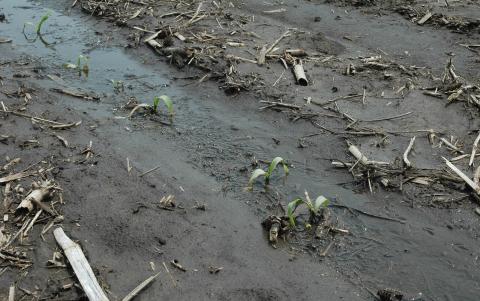
Corn Establishment and Growth in Saturated Soils: A Brief Review of New Research
May 31, 2019
How long can seedling corn survive under flooded conditions? A review of current scientific literature offers new understandings of when and how plant injury occurs and what factors affect it.
Response of Germinating and Early Season Soybeans to Flooding
May 30, 2019
Injury to germinating and seedling soybean from flooding depends on several factors, including soybean growth stage, flood duration, and air and soil temperature and varies the varieties. Pythium and Phytophthora are two diseases to scout for after flooding.
Resistance Management Webinar Series Starts in January
December 7, 2018
The new “Resistance Management Webinar Series” starting this January will feature live presentations from guest speakers on current resistance issues and research. Continuing education credits will be available for certified crop advisers.
Flooding and Ponding in Soybeans
June 22, 2018
Soybean plants are generally able to withstand a fair amount of flooding in the short term; however, diseases favored by wet conditions may become a problem for the rest of the season. Research shows the length of time the soil is wet and the type of soil will affect plant injury and survival.
Flooding and Ponding in Corn
June 22, 2018
Ponding or flooding of fields affects corn differently at different stages, depending on duration of flooding and other factors. Growers should assess the potential for nitrogen loss and increase scouting for corn disease in these fields.


